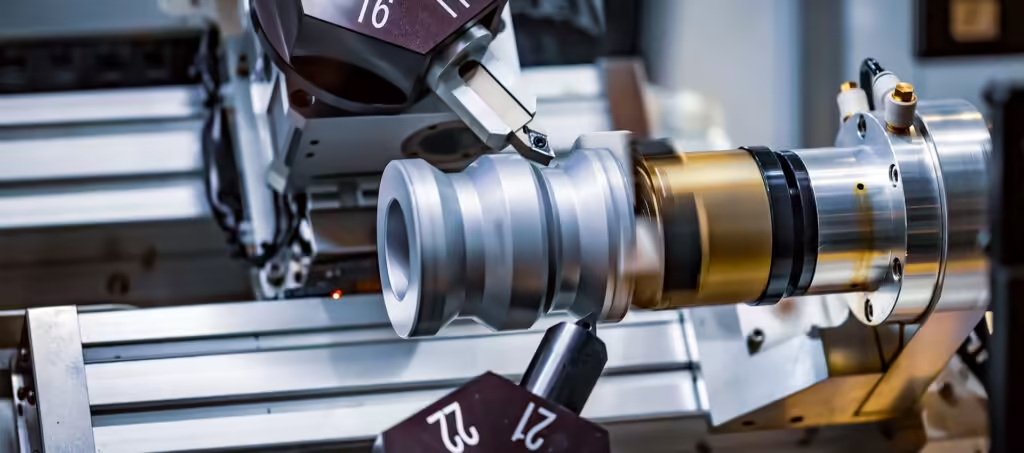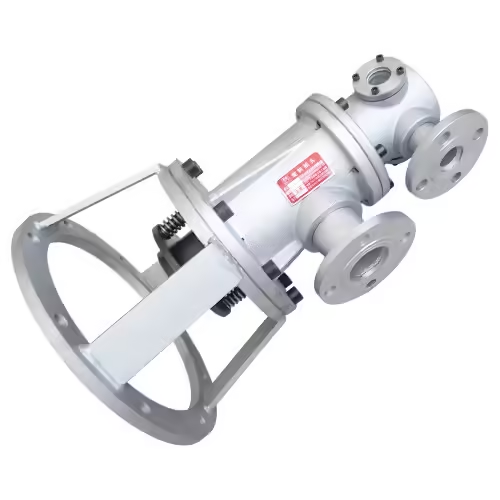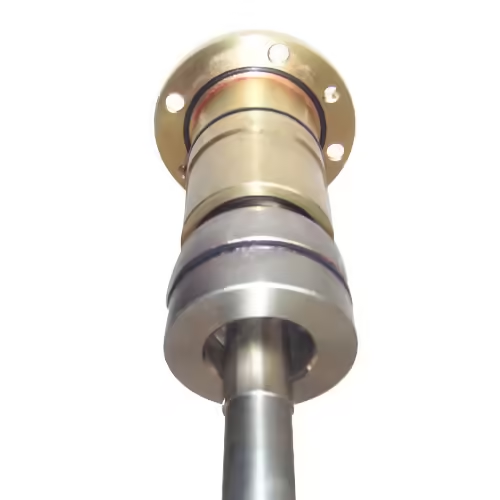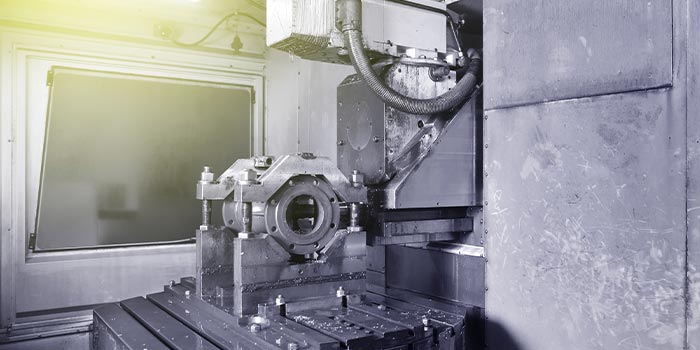-
هاتف: +86-13581108878
-
بريد إلكتروني: [email protected]
مرحباً بكم في مدونتي!
قبل أن نتعمق في المحتوى، يسعدني انضمامكم إليّ على منصاتي للتواصل الاجتماعي، حيث أشارك المزيد من الأفكار، وأتفاعل مع المجتمع، وأنشر التحديثات. إليكم كيفية التواصل معي:
فيسبوك: https://www.facebook.com/profile.php?id=61575858997962
لنبدأ رحلتنا معًا. آمل أن تجدوا هذا المحتوى ثريًا وجذابًا وقيّمًا.
جدول المحتويات
مقدمة
في بيئة الصناعة سريعة التطور اليوم، يُعدّ تقليل وقت تعطل المعدات أمرًا بالغ الأهمية للحفاظ على الكفاءة التشغيلية والقدرة التنافسية. وتُعدّ الوصلات الدوارة أساسية لتحقيق هذا الهدف، فهي مكونات أساسية تضمن نقل السوائل دون تسرب بين المكونات الثابتة والدوارة. ومع ذلك، يُطرح سؤال شائع: كيف يُمكن للوصلات الدوارة تقليل وقت التعطل؟
في شركة Modern Seals، نتخصص في حلول الختم الديناميكي، بما في ذلك الوصلات الدوارة والخراطيم المعدنية وأنظمة ختم خطوط السوائل. بفضل خبرتنا الواسعة وبراءات الاختراع العديدة التي نمتلكها في تقنياتنا، ندرك أهمية وجود مكونات موثوقة لا تعمل بكفاءة فحسب، بل تُطيل أيضًا من عمر المعدات.
ستتناول هذه المدونة بالتفصيل آلية عمل الوصلات الدوارة، وكيفية تقليل انقطاعات التشغيل، وما يجب مراعاته عند دمجها في نظامك. إذا كنت تبحث عن طرق لتحسين الأداء الميكانيكي وتجنب فترات التوقف المكلفة، فتابع القراءة - لدينا الحلول.

ما هو المفصل الدوار؟
الوصلة الدوارة، المعروفة أيضًا باسم الوصلة الدوارة، هي جهاز ميكانيكي يربط المعدات الدوارة بأنابيب ثابتة لنقل السوائل، مثل البخار والماء والزيت أو سائل التبريد. تضمن هذه الوصلة اتصالًا آمنًا وخاليًا من التسرب بين المكونات الثابتة والمتحركة.
الوظائف الرئيسية للمفصل الدوار
- يحافظ على اتصال سائل محكم بين المكونات الدوارة والثابتة
- يستوعب الحركة المحورية والشعاعية
- يعمل تحت ضغط ودرجة حرارة عالية
- يضمن الحد الأدنى من التسرب والتآكل بمرور الوقت
إن فهم كيفية عمل المفصل الدوار أمر حيوي لتقدير دوره في تقليل وقت تعطل الماكينة.
كيف يعمل المفصل الدوار؟
يعمل المفصل الدوار باستخدام آلية إحكام داخلية تسمح بمرور السوائل مع الحفاظ على سلامة الوصلة. فيما يلي شرح لوظائفه:
عملية نقل السوائل
- الاتصال بالأنبوب الثابت:يتصل المفصل بأنبوب ثابت يزود أو يجمع السوائل.
- الحركة الدورانية:يتم توصيل الجزء الدوار من المعدات، مثل الأسطوانة أو الأسطوانة، بالقسم الدوار للمفصل.
- واجهة الختم:تتحكم الأختام الموجودة داخل المفصل في الضغط وتمنع التسربات أثناء الدوران.
- التدفق المستمر:عندما تدور المعدات، يسمح المفصل بتدفق السوائل بشكل مستمر، دون فصل الإمداد.
يقلل التشغيل السلس من الحاجة إلى الصيانة المتكررة، وهي بالضبط الطريقة التي يعمل بها المفصل الدوار لتقليل وقت التوقف عن العمل.
لماذا يُعدّ التوقف عن العمل أمرًا مهمًا في التطبيقات الصناعية
إن توقف العمل في البيئات الصناعية لا يعني مجرد توقف مؤقت، بل يعني انخفاضًا في الإنتاجية، وتأخرًا في التسليم، وزيادة في تكاليف التشغيل. عندما تتعطل مكونات نقل السوائل، مثل الوصلات الدوارة، أو يضعف أداؤها، قد تتطلب الأنظمة إيقاف التشغيل لفحص الأجزاء المعيبة أو استبدالها.
وهنا تثبت المفاصل الدوارة عالية الجودة، مثل تلك التي تنتجها شركة Modern Sealing، جدارتها من خلال تمكين:
- فترات صيانة أطول
- استعادة النظام بشكل أسرع
- تشغيل مستقر في ظل ظروف التحميل المتنوعة
فوائد استخدام المفاصل الدوارة لتقليل وقت التوقف عن العمل
التشغيل المستمر
صُممت الوصلات الدوارة للحفاظ على تدفق مستمر وخالٍ من التسرب للسوائل حتى أثناء تشغيل المعدات. يُعد فهم آلية عمل الوصلة الدوارة أمرًا أساسيًا لفهم آلية نقل الوسائط المستمر هذا الذي يمنع حالات التوقف المتكررة الناتجة عن أعطال التوصيل. يضمن هذا التشغيل المستمر سير عمليات الإنتاج بسلاسة دون توقفات مكلفة، مما يُعزز كفاءة المعدات بشكل عام.
تحسين عمر المعدات
من أهم مزايا معرفة آلية عمل المفصل الدوار تقدير دوره في تقليل التآكل والتلف. فالإحكام الجيد داخل المفصل يقلل الاحتكاك ويمنع دخول الملوثات إلى مكونات الآلات، مما يطيل عمر المفصل والمعدات المتصلة به. ونتيجة لذلك، يقل خطر الأعطال المفاجئة، مما يحمي استثماراتك على المدى الطويل.
صيانة أقل
كيف يعمل المفصل الدوار على تقليل فترات التوقف؟ بفضل توفيره عزلًا موثوقًا وبنية متينة، يُقلل المفصل الدوار من الحاجة إلى عمليات فحص وإصلاح متكررة. يتحمل المفصل الدوار المصمم جيدًا ظروف التشغيل الصعبة، مما يُقلل من تكرار دورات الصيانة. هذا يعني انقطاعات أقل لعملياتك وتكاليف صيانة أقل، مما يُحسّن الإنتاجية ووقت التشغيل.
تعزيز السلامة
إن فهم آلية عمل المفصل الدوار يُبرز مزاياه المتعلقة بالسلامة. فمن خلال منع تسرب السوائل الخطرة أو البخار بفعالية، تُقلل المفاصل الدوارة من خطر الحوادث والمخاطر البيئية. كما يضمن الإغلاق الموثوق تحت الضغط أداءً مستقرًا للنظام، مما يُساعد على الحفاظ على بيئة عمل آمنة وتجنب التوقفات غير المخطط لها الناتجة عن حوادث السلامة.
عوامل أداء المفصل الدوار
لفهم كيفية عمل المفصل الدوار لتقليل وقت التوقف بشكل كامل، ضع في اعتبارك العوامل المختلفة التي تؤثر على فعاليته:
| عامل | وصف | التأثير على وقت التوقف |
|---|---|---|
| اختيار المواد | الفولاذ المقاوم للصدأ والكربون والنحاس | يحدد مقاومة التآكل والمتانة |
| نوع الختم | ميكانيكي، شفة، هيدروستاتيكي | يؤثر على منع التآكل والتسرب |
| توافق الوسائط | البخار، النفط، الماء، المواد الكيميائية | يضمن الأداء الأمثل ويقلل من الأعطال |
| تصنيف الضغط | تتراوح من منخفضة إلى عالية جدًا | يدعم التطبيقات الصناعية المتنوعة |
| سعة درجة الحرارة | حتى 350 درجة مئوية أو أكثر | يؤثر على سلامة الختم وعمر الخدمة |
تساعد هذه العوامل المستخدمين على اختيار المفصل الصحيح لنظامهم المحدد، مما يمنع عدم التطابق الذي قد يؤدي إلى التوقف عن العمل.
التطبيقات التي تقلل فيها الوصلات الدوارة من وقت التوقف عن العمل
تُعد الوصلات الدوارة أساسية في مجموعة واسعة من الصناعات. وفيما يلي أهميتها في تقليل وقت التوقف:
- تصنيع الورق: يضمن نقل البخار بشكل ثابت إلى أسطوانات التجفيف
- البلاستيك والمطاط: يسهل نقل الحرارة أو التبريد في القوالب الدوارة
- معالجة المنسوجات: تسمح بتبادل السوائل بشكل مستمر في آلات الصباغة الدوارة
- إنتاج الصلب والألمنيوم: إدارة التبريد في مصانع الدرفلة ذات درجات الحرارة العالية
- الأغذية والمشروبات: ضمان نقل السوائل الصحية في معدات الطهي أو التعبئة الدوارة
في كل هذه السيناريوهات، تظل الفائدة الأساسية هي نفسها - حيث تعمل المفصلة الدوارة على تقليل وقت التوقف عن العمل من خلال تمكين نقل السوائل بشكل مستمر ومختوم وموثوق.
اختيار الصحيح المفصل الدوار
ليست كل الوصلات الدوارة متساوية. لتحقيق أقصى استفادة من استثمارك وتجنب الأعطال المفاجئة، ضع في اعتبارك ما يلي:
التوافق
اختر وصلة دوارة تتوافق بدقة مع درجة حرارة تشغيل تطبيقك، ونطاق الضغط، والسرعة، ونوع السائل أو الغاز المنقول. قد يؤدي استخدام وصلة غير مصممة لظروفك الخاصة إلى عطل مبكر، أو تسرب، أو حتى تلف المعدات. تأكد دائمًا من توافق المادة والختم مع وسائطك لضمان تشغيل آمن وطويل الأمد.
الجودة والشهادات
يضمن الاستثمار في وصلة دوارة من شركة مصنعة معتمدة وذات سمعة طيبة مثل Modern Sealing أداءً ثابتًا وإمكانية تتبع المنتج. تُمثل معايير الشهادات، مثل ISO وCE، التزامًا بالتميز في التصنيع والاختبارات الدقيقة وجودة المواد. لا تدوم الوصلات عالية الجودة لفترة أطول فحسب، بل تُقلل أيضًا من فترات الصيانة وخطر الأعطال.
الدعم والتخصيص
الدعم الفني بالغ الأهمية، خاصةً للتطبيقات المعقدة أو عالية الأحمال. يستطيع المُصنِّع الذي يُقدِّم خدمات تصميم مُخصَّصة تكييف هندسة الوصلات وأنظمة الختم والمواد لتناسب متطلبات التشغيل الخاصة. في Modern Sealing، يتعاون فريقنا الهندسي بشكل وثيق مع العملاء لتقديم حلول مُحسَّنة وفعّالة من حيث التكلفة، تتكامل بسلاسة مع أنظمتكم.
أفضل ممارسات الصيانة


حتى أقوى المفاصل الدوارة تستفيد من الصيانة المناسبة. إليك بعض النصائح:
- فحص منتظم: التحقق من التآكل أو عدم المحاذاة أو التسرب
- تشحيم الأختام: استخدم مواد التشحيم المتوافقة لتقليل الاحتكاك
- استبدال الأجزاء البالية: يؤدي استبدال الأختام أو المحامل في الوقت المناسب إلى إطالة عمر المفصل
- مراقبة الأداء: استخدم أدوات مراقبة الحالة للكشف عن العلامات المبكرة للفشل
تتوافق هذه الممارسات بشكل مثالي مع مبدأ كيفية عمل المفصل الدوار لتقليل وقت التوقف عن العمل - من خلال تمكين الكشف المبكر عن مشكلات النظام والوقاية منها.
خاتمة
أ المفصل الدوار هو أكثر من مجرد موصل ميكانيكي؛ فهو عنصر أساسي للتشغيل الفعال والمستمر في الأنظمة الصناعية. بفهم آلية عمل المفصل الدوار لتقليل وقت التوقف، يمكن للصناعات اتخاذ قرارات مدروسة تعزز الإنتاجية، وتقلل تكاليف الصيانة، وتضمن موثوقية المعدات.
في شركة مودرن سيلينج، نفخر بكوننا روادًا في هذه التقنية. بفضل خبرتنا الواسعة وحلولنا الحاصلة على براءات اختراع، نساعد عملائنا حول العالم على تحقيق أداء أفضل مع تقليل وقت التوقف.
هل تبحث عن ترقية معداتك بمفاصل دوارة عالية الجودة؟ اتصل بنا اليوم لاكتشاف حل الختم المثالي لنظامك.
التعليمات
كيف يفعل أ المفصل الدوار العمل في نظام صناعي؟
يعمل المفصل الدوار عن طريق إنشاء وصلة محكمة الغلق بين الأنابيب الثابتة والمعدات الدوارة، مما يسمح بنقل السوائل دون أي تسريبات. بهذه الطريقة، يعمل المفصل الدوار على تقليل وقت التوقف عن العمل من خلال ضمان تدفق مستمر وتقليل احتياجات الصيانة.
لماذا من المهم أن نفهم كيف يعمل المفصل الدوار؟
يساعد فهم كيفية عمل المفصل الدوار المهندسين على اختيار النموذج المناسب لمتطلبات الوسائط والضغط والسرعة المحددة، مما يضمن التشغيل الموثوق به وتجنب عمليات الإغلاق غير المخطط لها والمكلفة.
هل يمكنك أن تشرح كيف يعمل المفصل الدوار تحت درجة حرارة وضغط مرتفعين؟
في البيئات عالية الضغط، يستخدم المفصل الدوار أختامًا متخصصة ومواد متينة للحفاظ على اتصال آمن أثناء الدوران. وهكذا يعمل المفصل الدوار بكفاءة حتى في الظروف القاسية، مما يدعم وقت التشغيل وسلامة المعدات.
كيف يعمل المفصل الدوار بشكل مختلف لأنواع الوسائط المختلفة؟
تتطلب الوسائط المختلفة - مثل البخار والزيت والمواد الكيميائية - وصلات دوارة مصنوعة من مواد وأختام محددة. ويعتمد عمل الوصلة الدوارة على مدى ملاءمتها لهذه الوسائط، وهو أمر بالغ الأهمية للحد من التسربات والأعطال.
أين يمكنني معرفة المزيد عن كيفية عمل المفصل الدوار لتطبيقي؟
يمكنك التواصل مع شركة Modern Sealing للحصول على إرشادات الخبراء حول كيفية عمل المفصل الدوار لمعداتك المحددة. يمكن لخبرائنا اقتراح الحل الأمثل لمساعدتك في تقليل وقت التوقف وزيادة كفاءة النظام.


